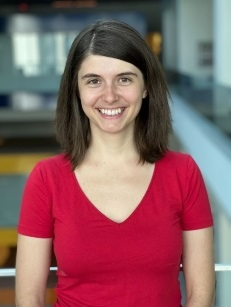
Antoniya A. Aleksandrova, Ph.D.
Antoniya received her B.A. degree in Physics and Mathematics from Williams College, M.A. and earned her Ph.D. in Physics as a Herchel Smith Fellow at the University of Cambridge, UK. During her time at Cambridge, she became fascinated with membrane proteins while working with Edmund Kunji at the Medical Research Council Mitochondrial Biology Unit. Her dissertation focused on the selectivity and transport mechanism of the mitochondrial ADP/ATP carrier using modeling and simulations. Her work on the ADP/ATP carrier taught her about the value of structural pseudo-symmetry for understanding function, so she joined the Forrest Lab at NINDS to further explore this connection. During her postdoctoral training, she has contributed to projects elucidating the transport mechanism of two pseudo-symmetric secondary transporters with similar folds (LeuT and SERT), in close collaboration with experimental scientists. Her primary research focus has been developing the EncoMPASS database and method for automatically detecting symmetry and pseudo-symmetry in membrane proteins, and analyzing the emerging patterns and their implications for function and evolution. As a founding member of the Neurobiology Interest Group at the NIH, she appreciates the physiological relevance of membrane proteins and believes in the importance of studying them through multi-disciplinary approaches.
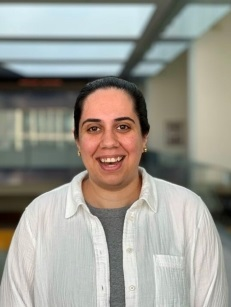
Annika Backer
Annika received a B.A. from Smith College in 2022, double majoring in Biology and Statistical & Data Sciences. As an undergraduate research assistant, she worked with Dr. Stephanie Jones (Exercise & Sport Studies) conducting statistical analysis of how pain and neuromuscular dysfunction relate to impaired balance and locomotion in people with Multiple Sclerosis. Annika has been an NIH post-baccalaureate IRTA fellow since May 2022. She joined the Forrest lab in late 2023, where she is utilizing computational approaches to study the structure and mechanism of the Serotonin Transporter (SERT). Previously, Annika was a fellow in the lab of Dr. Susan Wray (Cellular and Developmental Neurobiology Section, NINDS), studying the effects of thyroid hormones on the activity and development of GnRH cells. During the Summer 2021, Annika participated in the NIH Summer Internship Program, mentored by Dr. John Heiss (Surgical Neurology Branch, NINDS). She implemented statistical analysis to evaluate whether surgical interventions alleviate physical and emotional pain in patients with type 1 Chiari Malformation.
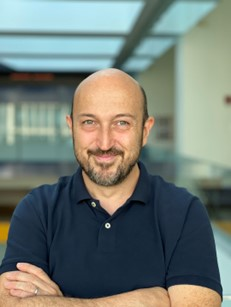
Giacomo Fiorin, Ph.D.
Giacomo received a M.S. in physics from the University of Padua and a Ph.D. in biophysics from the International School for Advanced Studies in Trieste (Italy). Since then, he has been a postdoctoral researcher at the University of Pennsylvania and Temple University with Dr. Michael Klein, and later a research-track faculty member at Temple. In 2020, Giacomo became a staff scientist at NINDS, associated with the labs of Dr. Lucy Forrest and Dr. José Faraldo-Gómez (NHLBI).
Giacomo's research uses atomically detailed simulations to understand how lipids and proteins govern the mechanics and morphology of a cell's membrane. He also develops, together with several collaborators, the widely used collective variables (Colvars) software library for enhanced sampling simulations. Lastly, Giacomo is tasked with the maintenance of computational resources for the Forrest and Faraldo-Gómez labs, and routinely advises his colleagues on leveraging high-performance computing in their research projects.
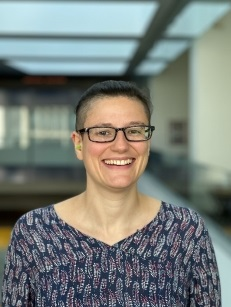
Eva Hellsberg, Ph.D.
Eva studied pharmacy and completed her Ph.D. in Computational Drug Design at the University of Vienna. Coming from interdisciplinary education and environments, her skills are best utilized to add atomistic rationale to structural, functional, and mechanistic observations from experiments. During her Master’s and Ph.D. projects she used various structure-based computational methods to rationalize experimentally measured binding affinities of protein-ligand interactions. In the Forrest lab, she is tackling key questions regarding the serotonin transporter’s function that remain unanswered, such as the identification of the interaction network of the chloride binding site and determination of the location and energetics of potassium binding. She approaches these problems using molecular dynamics simulations and enhanced sampling techniques. Eva is co-founder and chair of the Women Scientist Fellows Committee within the Fellows Committee (FelCom), which aims to provide support and empowerment to women fellows, ensuring a platform for effective communication, knowledge sharing, resource access, and fostering a sense of community.
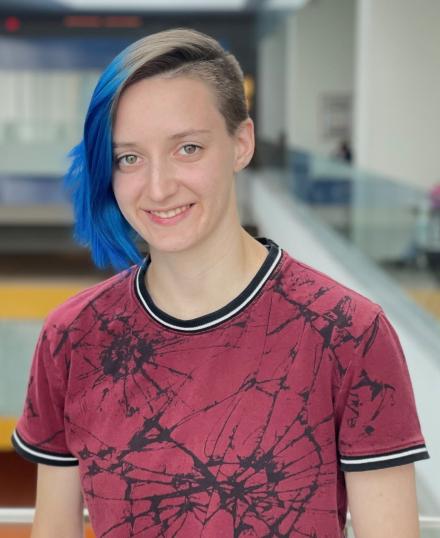
Adrian Koretsky
Adrian graduated from Brandeis University in 2023, where they received a double B.S. in Physics and Neuroscience. During their time at Brandeis, Adrian participated in research with Dr. W. Benjamin Rogers, studying self-assembly of DNA structures. For their thesis project, they explored the effects of different DNA Nanostar structures on the crystallization of DNA-coated nanoparticles. After graduating, Adrian joined the Swartz and Forrest laboratories in NINDS as a postbaccalaureate fellow. Here, they will be using computational modeling to look at different protein-protein interactions between ion channels and auxiliary partners, exploring the structure of these complexes.
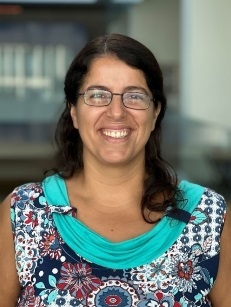
Vanessa Leone, Ph.D.
Vanessa received her B.S. degree in 2005 from the University of the Republic in Montevideo, Uruguay. During these studies, she worked in the Theoretical and Computational Chemistry Laboratory, teaching undergrad students and performing research applying quantum chemistry to biological reactions. In 2009, she obtained a Ph.D. at the International School for Advanced Studies (SISSA/ISAS) in Trieste, Italy, where she gained expertise in enhanced sampling methodologies applied to enzymatic reactions. From late 2009 to 2015, Vanessa held a postdoctoral position in José Faraldo-Gómez’s lab, first at the Max Planck of Biophysics in Frankfurt, Germany, and then at the NHLBI, NIH. During that period, she studied several aspects of ATPase membrane rotors, using various computational methods, from quantum chemistry free-energy methods to de-novo folding approaches. She also worked in a wet lab in Dr. Thomas Meier's group, performing protein purification and Isothermal Titration Calorimetry experiments on a membrane protein. Vanessa joined the Forrest lab in 2015 as a postdoctoral fellow and in 2019 as a Staff Scientist, studying secondary membrane transporters, combining molecular dynamics simulations with biophysical experimental data, and different modeling approaches.
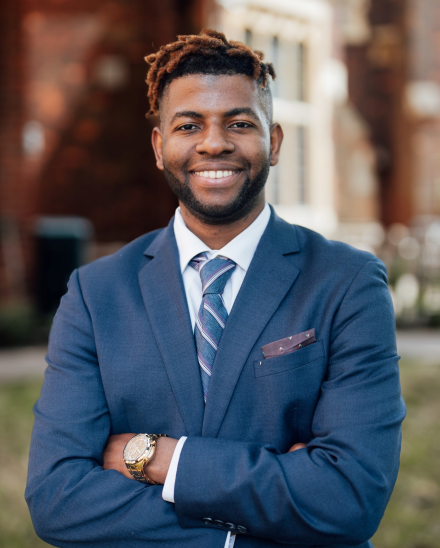
Jude Tunyi
Jude received his B.S. degree in Biochemistry from the University of Washington in 2017. Previously, he worked on simulating and experimentally testing protein mimetics for Apolipoprotein A1 as part of the NHLBI at the NIH. He joined the Forrest group in 2022 as an NIH-Oxford Scholar DPhil student studying the structure, function and trafficking of SLC transporters with computational models and experiments. Jude is co-supervised with Dr. Simon Newstead at Oxford University. He is also a medical student attending The Ohio State College of Medicine for his medical degree.
